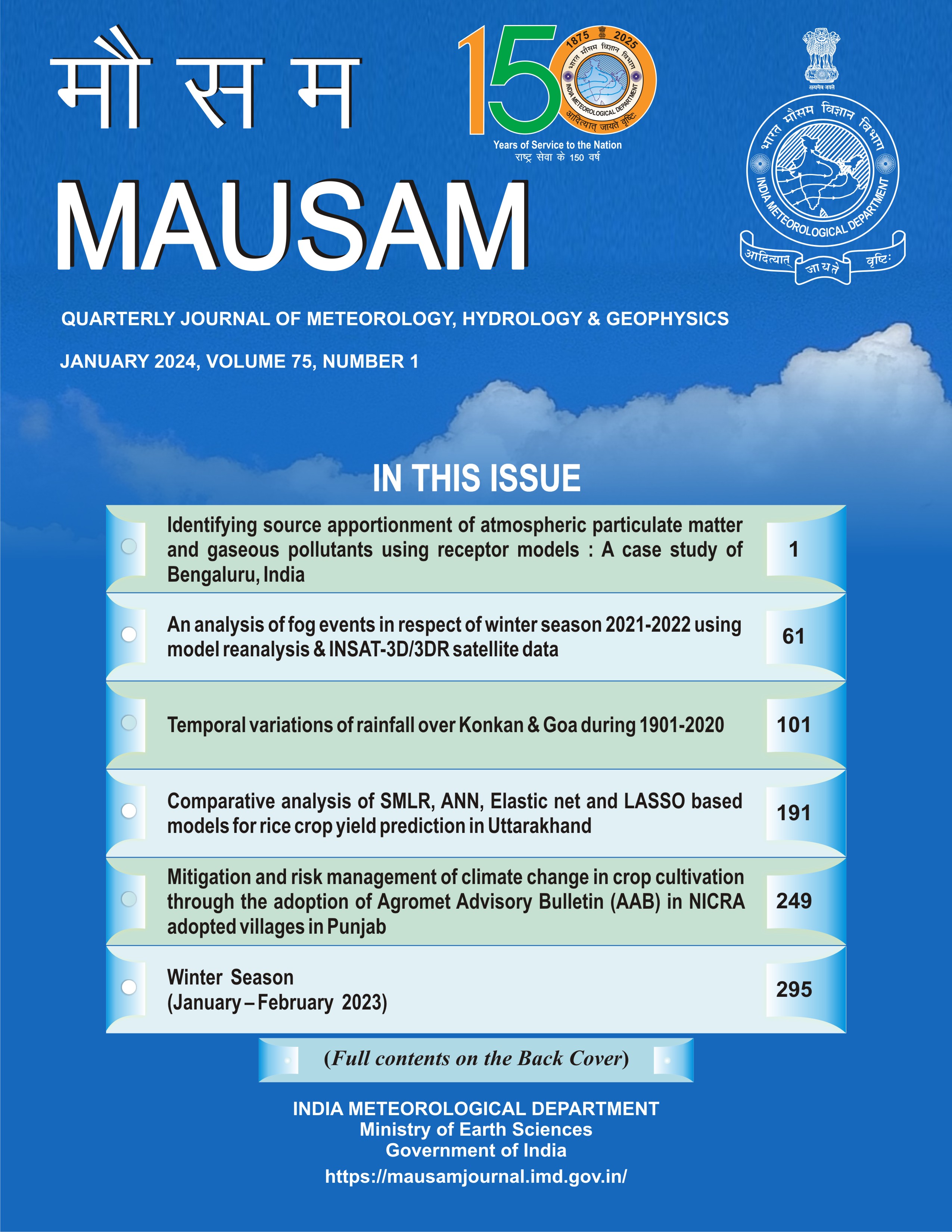Identifying source apportionment of atmospheric particulate matter and gaseous pollutants using receptor models : A case study of Bengaluru, India
DOI:
https://doi.org/10.54302/mausam.v75i1.6080Abstract
The data of Particulate matter PMs (PM2.5, PM10) and Gaseous Pollutants such as carbon monoxide (CO), methane (CH4), oxides of nitrogen (NOx: NO and NO2), non-methane hydrocarbons (NMHCs), sulfur dioxide (SO2), along with ammonia (NH3) at five different locations across Bengaluru from 1st January, 2017 to 20th March, 2018 were collected. The primary objective of this research work is to identify the sources of atmospheric particulate matter and gaseous pollutants using receptor models in Bengaluru, India. To execute this, receptor models, namely Conditional Bivariate Probability Function (CBPF) and Concentrated Weighted Trajectory (CWT) Analysis, are applied. Conditional Bivariate Probability Function (CBPF) shows that, annually, the maximum concentrations of PMs over receptor sites were detected during low wind speed (< 2 knots) along the north-east direction specifying that the long-range transport does not play an essential role in the transportation of higher concentrations of PM and their primary source region may be localized. Concentrated Weighted Trajectory (CWT) analysis shows that, seasonally, the highest air mass contribution of about 37% was noticed in summer, whereas the lowest was in the post-monsoon season (13%). The significant contribution of PM2.5 transported from long distances was during monsoon, and in the case of PM10, it was in summer. The study suggests that the long-range transport of PMs and gaseous Pollutants was not vital and was observed to be localized.
Downloads
Published
How to Cite
Issue
Section
License
Copyright (c) 2023 MAUSAM

This work is licensed under a Creative Commons Attribution-NonCommercial 4.0 International License.
All articles published by MAUSAM are licensed under the Creative Commons Attribution 4.0 International License. This permits anyone.
Anyone is free:
- To Share - to copy, distribute and transmit the work
- To Remix - to adapt the work.
Under the following conditions:
- Share - copy and redistribute the material in any medium or format
- Adapt - remix, transform, and build upon the material for any purpose, even
commercially.



